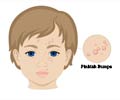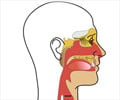Global warming can impact the childhood viral infection rate, finds a new study.

TOP INSIGHT
Global warming may influence the rates of HFMD (Hand, foot, and mouth disease), both by prolonging the outbreaks duration during peak seasons and by raising the possibility of HFMD transmission throughout the year.
The findings suggest that global warming may impact the rates of HFMD, both by prolonging the duration of outbreaks during peak seasons and by increasing the likelihood of HFMD transmission throughout the year.
"There is an emerging understanding of the link between our changing climate and the rising incidence of various infectious diseases. Many of these changes are so insidious that they are hard for the average practitioner to detect at the individual level," said lead author Dr. Sarah Coates, of the University of California, San Francisco.
"We hope to raise awareness within the medical community of these large-scale trends and spur appropriate political action given their potential consequences to public health."
Source-Eurekalert
 MEDINDIA
MEDINDIA




 Email
Email










